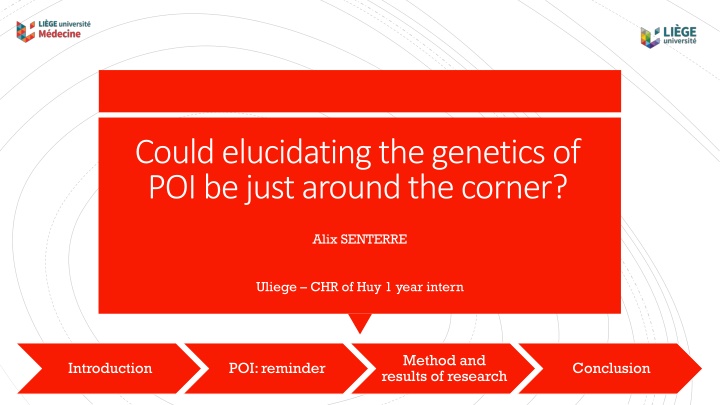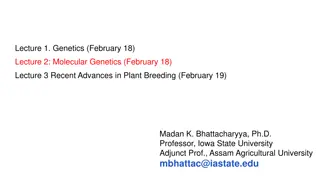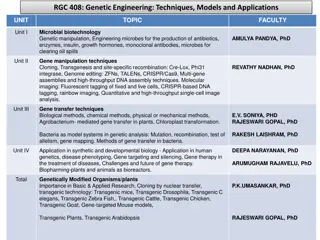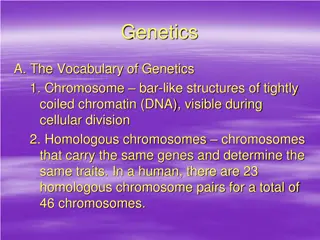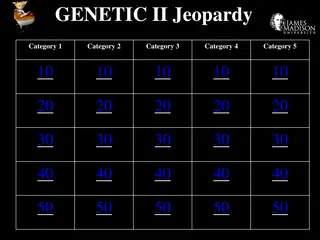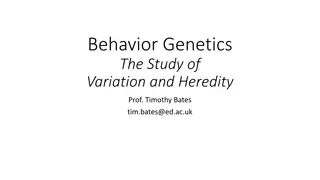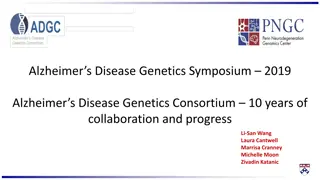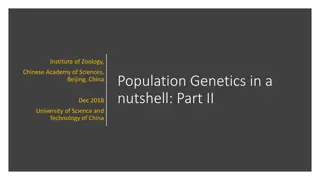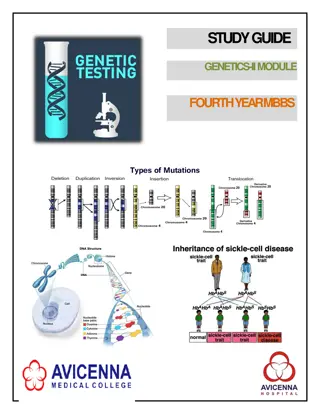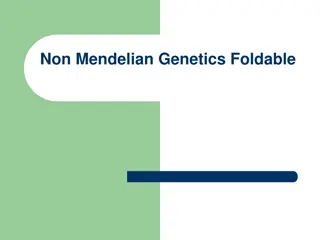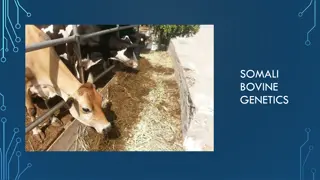Elucidating the Genetics of POI
"Could elucidating the genetics of premature ovarian insufficiency (POI) be just around the corner? This research explores the genetic factors contributing to POI, its impact on fertility, and potential treatment avenues. Understanding the genetic underpinnings of POI could lead to new targeted therapies, improved patient care, and enhanced fertility preservation options. Explore the key steps in ovarian function development and the importance of genetic screening for families affected by POI."
Download Presentation

Please find below an Image/Link to download the presentation.
The content on the website is provided AS IS for your information and personal use only. It may not be sold, licensed, or shared on other websites without obtaining consent from the author.If you encounter any issues during the download, it is possible that the publisher has removed the file from their server.
You are allowed to download the files provided on this website for personal or commercial use, subject to the condition that they are used lawfully. All files are the property of their respective owners.
The content on the website is provided AS IS for your information and personal use only. It may not be sold, licensed, or shared on other websites without obtaining consent from the author.
E N D
Presentation Transcript
Could elucidating the genetics of POI be just around the corner? Alix SENTERRE Uliege CHR of Huy 1 year intern Method and results of research Introduction POI: reminder Conclusion
Primary or secondary amenorrhea Infertility Puberty delay Stop of growth Patients below the age of 40 Mood swings Dyspareunia Loss of sex drive Primary ovarian Which diagnosis ? ? ? (POI) Heat waves Anamnesis insufficancy Hypogonadotropic hypogonadism PCOS Hypergonadotropic hypogonadism Pregnancy
Hormonal dosage - FSH - stradiol - bHCG - AMH - Prolactine Hypergonadotropic Definition from ESHRE hypogonadism - Follicular pool impairement during embryonic Amenorrhea of at least 4 months development, Methods of investigation Pelvis US study Elevated FSH levels: above 25 UI/L on two dosages 4 weeks apart - Blocage of follicule maturation - Accelerated follicular atresia, Etiologies Genetic ? Surgical ? Chimio-/Radio-toxicity ? Chromosomal ? Autoimmune ?
Why the interest in genetics regarding POI ? Understanding the genetics of POI 1% women <40 yo Understanding of the pathogenic mechanisms 70 % idiopathic Prevention ? Screening ? Cure ? 10-30% 1D family members 20-25% genetic Major clinical implications: New opportunities of treatment - Optimization of patient care -
Infertility Oocyte bank. Adoption. Cryopreservation impossible: too few follicules Indeed: actuel treatment . Impaired bone mineralisation CV imparement ONLY SYMPTOMATIC HST HST Sexual functions Treatment of the oestrogen deprivation HST Depression HST Infertility treatment Today: PREVENTION CURE
Key steps in the ovarian function s developement Implication of genetic variants Research goal: Understanding the genetics of POI Why ? New targeted therapy Different treatment for different phenotypes Family screening Pronostic et fertility potential Prevention ? Cryopreservation ? Better genetic counceling + fertility treatment
17 patients: array-CHG analyses Deletions - Duplications Research method Prospective study, patients selected between 2014 et 2021 Initial cohort of 42 patients, other causes of POI excluded Fragile X premutations and caryotype abnormalities were ruled out: 40 patients remaining 15 patients: gene pannel analysis Nucleotidic variation Panel BRIGHTcore valuant 32 g nes d interet
Results PANEL BRIGHTCORE ARRAY CHG 7 genes of interest 41% Positive Results 50% Positive results 50% Negative Results 59% Negative Results 27 genes => 9 protein coding TUSC3 Tumor Suppressor Candidate 3 VARIANTS ANALYSIS MSR1 Macrophage Scavenger Receptor 1 NRXN1 Neurexin 1 AKR1C2 Aldo-keto reductase family 1 member C2 AC007682.1 Long intergenic noncoding ARN AC092578.1 Long intergenic noncoding ARN Genes unveiled by array CGH 8 19 MIR4733 microRNA 4733 0% 20% 40% 60% 80% 100% PALB2 Partner and localizer of BRCA2 New genes of interest Unrelated genes Known responsible genes
Conclusion The genetic approach is essential to the understanding of the pathogenesis of heterogeneous disease such as POI Cytogenomics and next generation sequencing are the most efficient methods to unveil genetics of POI. Limitation: these study NEED replication, rendomization and case control population for reliable results.
